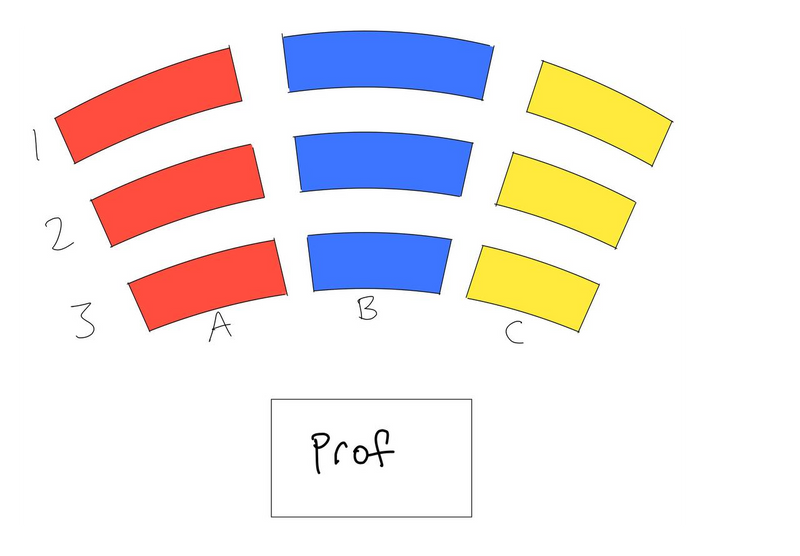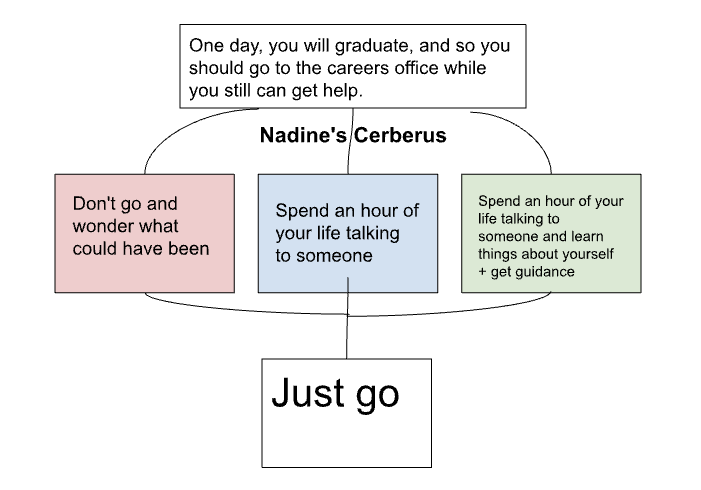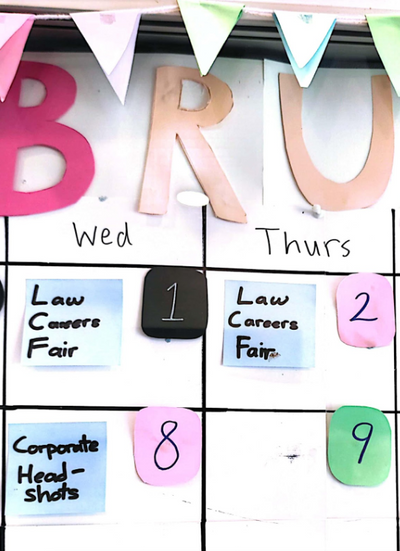I’m not a good student, but there are those who are. I’m not a bad student, but there are those who are. I’m just somewhere in between.
Good, bad, just somewhere in between – all of us choose our seats in tutorials with our own rationales, subconscious or intentional. I’ve interviewed students who identify as good, bad, or somewhere in between, and compiled their seating strategies.
Now, I present to you a complete guide of where you should sit in a seminar room, so you can become that person you always dreamt of – whoever that may be.
Part I
Professors You Will Meet
There are many types of professors and students. (T. Jianhao, 2022) Let’s go into the types of professors first, since they are an interesting breed. For the purposes of this article, we’ll focus on three types.
The Rock: Sits or stands resolutely at their desk while speaking. If they stand, they usually swivel on the spot without actually moving. Some students observed that Rocks may subconsciously favour their dominant side when looking around a room. P, student of a Rock, reported worrying about her yummy class-part points, as this Rock was left-handed and she sat to their right. Of course, it is entirely possible that this Rock simply did not like her very much.
The Wanderer: Walks like a queen that has fallen off a chessboard – that is, left, right, up, down, diagonal. Student O regaled us with “You know that feeling in secondary school when you were using your phone under the table and your teacher would suddenly pop up behind you?” The Wanderer evokes a similar feeling. Though, the author doubts the Wanderer actually cares about that Bitcoin subreddit you pulled up. They just want to engage you. And stretch their legs.
The Bingo Roller: Can exist simultaneously with the Rock and Wanderer. Calls upon students when they least expect it. The Bingo Roller may do this randomly, from a set rotation, or deliberately target students who are noticeably distracted (see The Wanderer; Bitcoin crashed and Student O is having a hard day).
Students You Will Be
The Fool: Will do or say anything for class part points. It doesn’t matter if it’s completely gibberish. If it’s an English word, they will say it. Fools may or may not be aware of the nonsense coming out. If they are aware, it’s because they’re aware that class part is 30% of their grade and boy oh boy are they not passing the final. The special thing about Fools is that they are not a fixed sub-group. The truth is that everybody, without exception, will at some point be a Fool.
The Sun: Extremely excited to study law. Will class part thoughtfully and earnestly. Their right arm’s in a sling when you see them when the academic year starts. Doctor’s orders: “You need to take a break from class parting for a bit.” This doesn’t faze them – God gave them two arms. Less zealous than The Fool.
The Moon: Prefers to avoid the prof’s attention. Will class part as necessary or when the topic intrigues them, but otherwise prefers to avoid the spotlight. It’s not that they dislike studying law, it’s just that they don’t want to speak more than they must. May or may not be browsing other sites in tutorials – you can tell because their laptop’s brightness is turned all the way down.
Interlude
The author has drawn a diagram of a seminar room below. This article revolves around seats in a seminar room because (1) they are the most common places for tutorials, (2) seating affects the attainment of our listed goals more so in seminar rooms than other rooms, and (3) the author happened to be in a seminar room when she thought of writing this.
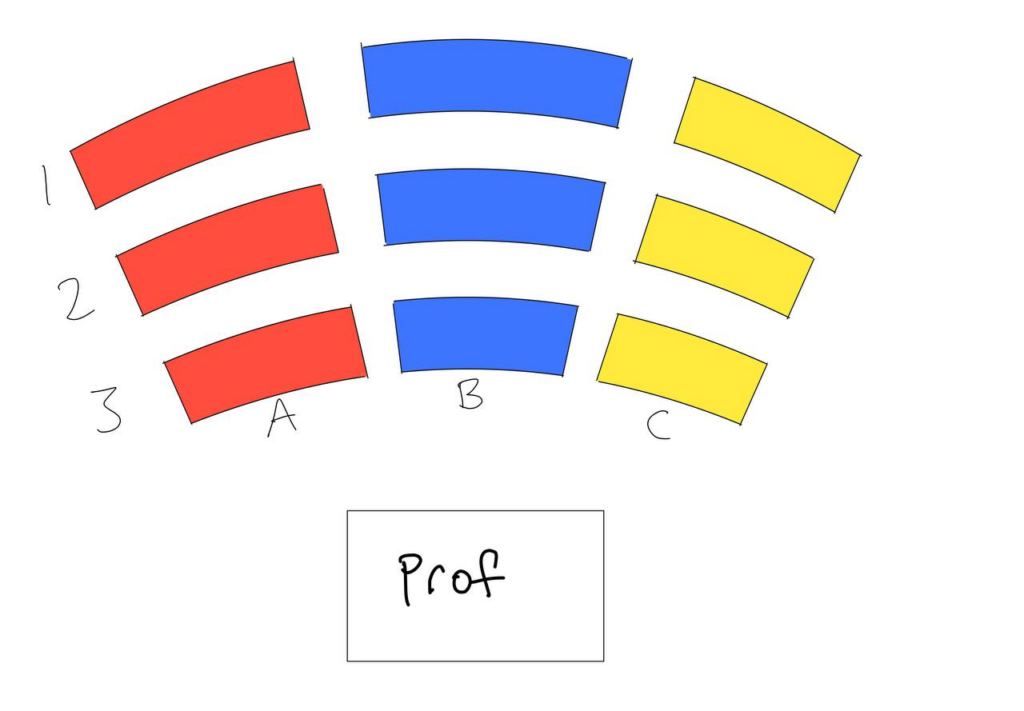
For this article, student T offered us some insight into their thought process when selecting a seat.
So between (A) someone who wants the professor’s attention and (B) someone who doesn’t, which would you say you are?
T: The former.
Where do you usually sit, if given the chance to pick any seat?
T: Usually in B3, right in front of the prof.
Is there a reason for this? Would your preference change depending on the class?
T: No. It’s a matter of habit. I do it so the prof can’t ignore me when I try to make a point.
Did you do this before university, in your previous schools?
T: When there wasn’t a seating arrangement, I’d do the same.
Students C, X, M, S, Y and N also pitched in–
Do you have a preference for aisle or middle seats?
M: Aisle. I want to be able to go to the toilet faster.
S: Middle. I don’t want to feel alone, and I usually sit with friends so that I can talk to people on both sides of me. The aisle is a good place to sit if you want to go to the toilet without disrupting anyone, though.
N: Aisle. It’s too cramped in the middle.
You answered that you don’t want to sit in column B, the center column. Why?
N: I want to sit at C2. I don’t want to sit in the middle of the room, but I want to be close enough so I can see and hear what’s going on without being in the prof’s direct line of vision. I feel like no one sits in column B (the middle column).
C: I’m trying to avoid being in the prof’s direct line of sight, but I still wouldn’t sit so far back or to the side that it’s obvious I’m trying to avoid being seen.
What types of students do you think would sit where? What would you self-identify as?
N: The Suns would definitely sit in front, in B.
T: If I was trying to slack off and actively avoid being called on… I think most people would intuitively sit at the back, around A1, B1, or C1. However, that would arouse the prof’s suspicions, so I’d choose A2.
S: I wanted to go unseen for most of my classes in Year 2, definitely.
C: I’m a slacker. I’d sit at A2.
X: I’m a mix of The Fool and The Sun. So I guess people like me would sit in the front row?
Do your preferences change based on the class?
S: For LARC and Crim in Year 1, I was enthusiastic and prepared, so it didn’t matter where I sat. For other mods, I preferred to sit behind to pay attention and type away. For seminars where the prof made it a point to cold call, I would try to sit further away from them. If it was voluntary class part, I wouldn’t mind sitting in the front row.
M: If the class involves people fighting for class part, I’m more likely to sit in front. If the prof cold calls, I’ll sit further away to avoid detection.
X: No. I like sitting in the front row. Also I get cold easily and I find that the front rows aren’t in the direct line of the aircon vent.
Anything else?
X: If you sit in the front row because you want to be participative, it can actually backfire. The prof may end up looking straight over your head.
C: You can try looking very studious as though you’re being very diligent in typing notes. Sometimes when I feel extreme, I even reference paper “notes”.
Y: If you don’t want to strain your neck while reading the whiteboard, sit in the middle column.
Part II
Let’s recap – You are trying to become The Sun, the enthusiastic law student, The Moon, the less enthusiastic but still hard working student, or The Fool, you fool.
You face The Rock, unmoving Library of Alexandria that they are, The Wanderer, longing to traverse every inch of this world, and/or The Bingo Roller, who will get you when you’re least prepared.
Here are your options.
The Rock
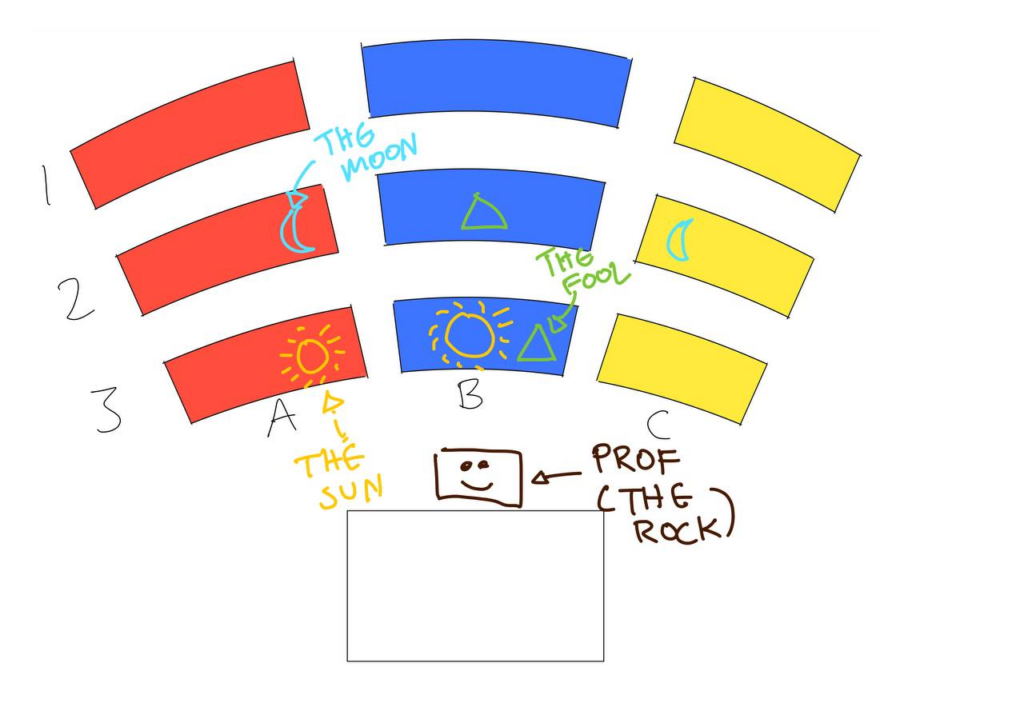
Let’s take a look at the Sun. Ideally, they go straight to the front, to seat B3. This allows them to constantly be noticed by the prof, so that they can learn to their heart’s content. Alternatively, The Sun may head for seat A3. They are still noticeable, and the problem student X mentioned, where the professor may look straight over your head, is mitigated by The Sun being to the left of the professor. Since The Rock does not move, however, the ideal seat for The Sun is in B3, lest the professor favour one side over the other when turning their head.
Now, the Moon. Ideally, they go to the second row, where they will look invested enough without appearing as if they’re trying to hide from the professor. The Moon should avoid column B, since that puts them uncomfortably in the direct sight line of the professor. Thus, A2 and C2 are preferable options.
Now, the Fool. They must jingle miserably to Column B. The Rock will not travel, so The Fool must stay in their line of sight at all times. The optimal seat is a toss-up between B2 and B3, since being in B3 may result in them being overlooked. The author opines that B3 is still the best choice, since when push comes to shove, The Fool can simply call out while raising their hand, “Prof, I have something useless to say!”
The Wanderer
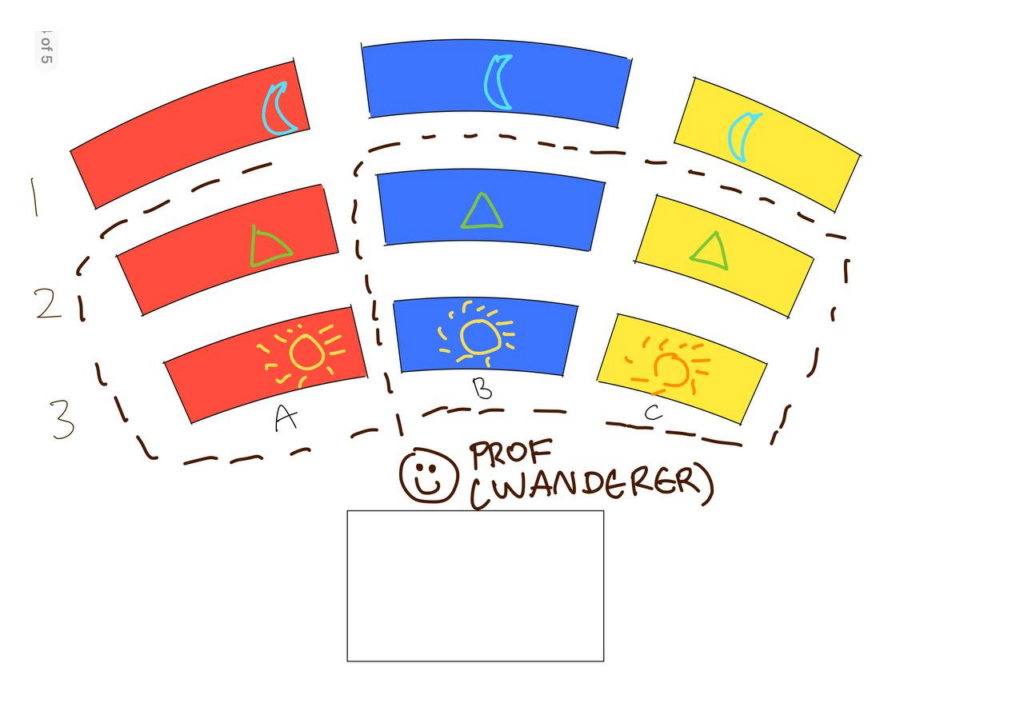
The Sun faces a dilemma. The thing about The Wanderer is that they are unpredictable in their movements. However, it’s more than likely that The Wanderer will eventually return to the front of the room. Hence, the ideal seat for The Sun is any seat in the front row – A3, B3, or C3.
The Moon can safely avoid the professor’s attention. It’s different from The Rock, because The Wanderer’s line of sight is constantly changing, and so to them, there is no absolute position where a student can be deemed to be trying to slack off. Hence, The Moon is advised to go for any seat in the back – A1, B1, or C1.
The Fool is advised to sit in the middle row. Here’s the thing – while their ideal seats could be the same as that of The Sun‘s, The Wanderer makes it so that The Fool must constantly be in The Wanderer’s line of sight. The Sun can make it a day without having to class part – The Fool cannot. Hence, for The Fool, they must take the middle row, that is, A2, B2, or C2.
The Bingo Roller
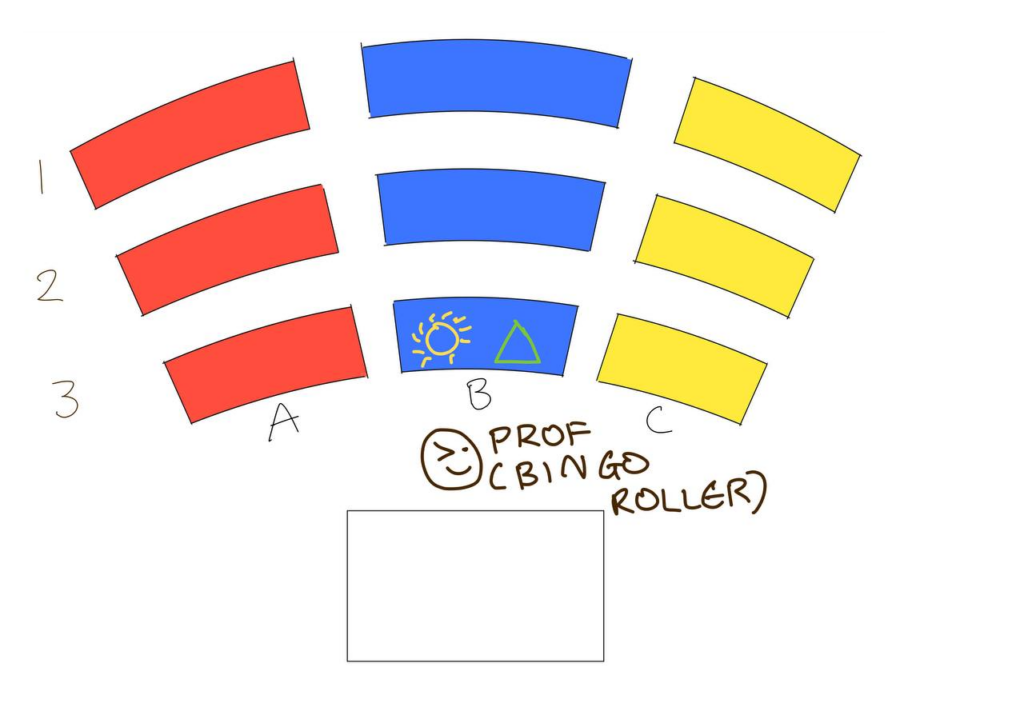
The recommendations for The Sun and The Fool remain the same as in The Rock scenario. Simply put, The Bingo Roller may end up having little regard for your exact position, especially if they are a fan of cold calling. As such, it is in the best interests of both students to sit as close as they can to The Bingo Roller.
The Moon is not pictured in this scenario. There is simply no way they will be able to avoid a cold call. Readers who look to become Moons must acknowledge that when up against a Bingo Roller, there is no escape from being cold called. Just do your readings.
Part III

Pictured is Professor Joel Lee, who graciously offered us some insight into the mind of a professor. His input is the final piece of the puzzle, that final squeeze of knowledge you need to plan where you’re going to sit.
Freshman readers, you may want to familiarise yourself with this man, since he may take you for SLIC. The author was also taught by Prof Joel, but let’s have the prof speak for himself.
When teaching a class, do you prefer walking around or standing on the spot?
As you know, if I can help it, I prefer walking around! Many things influence my decision but the big 3 are:
- I get bored standing in one spot
- Walking around allows me to see whether students are shopping/looking at unmentionables on their computers.
- Walking around allows students to focus on something other than content. It allows for a variety of stimuli, and their eye movements also allow for neurological integration of information and experience. (You asked!)
Do you cold call? If you do, what influences your decision on who to call on?
I generally do not cold call. If someone doesn’t want to speak, I generally respect their choice. But the converse is true, if you want to speak in my class, you speak. Do not expect me to call on you so that you can speak.
In the exceptional times where I do cold call, it may be to help that person gain some cred, points or confidence. In these instances, it’s usually because I have received cues at some level that the student has something to say and wants to say it.
Assuming you’re in a seminar room, which students tend to stand out to you? E.g Do you tend to notice students in the back more if they’re noticeably distracted?
This is a tough one to answer. I notice pretty much every one of them. This is separate from whether I call on them, or interact with them.
As mentioned in an earlier response, I will call on and interact with those who choose to interact. These can be by way of the students raising their hands, their eye contact, their non-verbal [signals].
As for students who are quiet, my view is that they are either quiet for a good reason, or that is their learning preference. I will still engage them through my non-verbals and delivery, and will only call on them if they choose to interact.
As for the distracted ones, again, they may be distracted for good reasons or they may simply be disinterested. In the former, I will engage them in my usual style but in the latter situation, I think they need to own responsibility for their learning, development and engagement.
Since this article is aimed at advising students on where to sit, I have to ask: If you were a student again, where would you sit in a seminar room?
The answer is it depends.
If I were a student again and I was still the person I was when I was in law school, I would sit on the left side of the room and toward the back. This is because I like learning from a distance so that I can see the big picture.
However, if I were a student again and I am the person I am today, I would change seating locations regularly, to gain different learning perspectives.
Finale
And with that, that’s all the perspectives and advice you need when contemplating where to sit in a seminar room. You’ve been blessed by the holy trinity of strategy: The mind of a professor, the mind of a student, and the mind of an editor at Justified. You’re welcome.
We would like to thank Professor Joel Lee, as well as the various students the author interviewed, for their time and effort. This article, though meant for seminar room strategies, can easily be applied anywhere else, and we hope you use this knowledge for good.
School’s starting. Get to your seats.
Photo of Prof. Joel Lee courtesy of Prof. Joel Lee, photo of SR4-3 courtesy of Ng Ziqin from Justified. The author thanks a talented NUS Business School friend for the diagrams.

